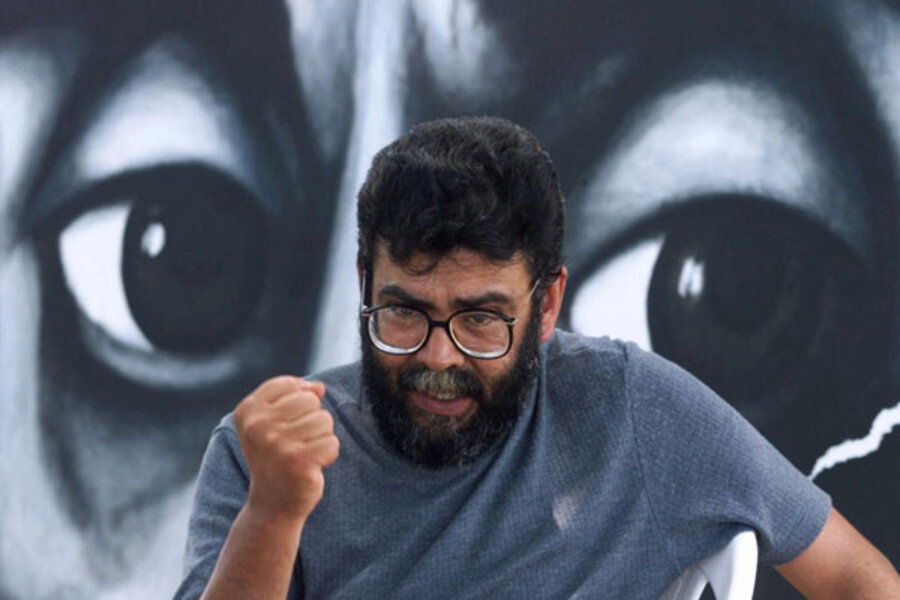Why Colombia's FARC rebels remain a threat after Cano's killing
Loading...
| Bogota, Colombia
Colombia forces have killed the top leader of the country’s most powerful guerrilla army after a bomb raid on his jungle camp, officials said, calling it the “most resounding blow” to the FARC in its nearly 50-year struggle against the government.
Guillermo Leon Saenz, whose nom de guerre was Alfonso Cano, was killed in combat Friday evening after an air raid earlier in the day in a remote region of Cauca Province. Cano’s body was was identified through fingerprinting. A photograph released to the media showed he had shaved off his trademark beard.
While Cano is the most senior commander of the Revolutionary Armed Forces of Colombia ever to be killed in combat, his death does not mean the imminent demise of the FARC.
“This is a more a political blow to the FARC more than a military one,” said Ariel Avila, a conflict analyst with the Nuevo Arco Iris think tank in Bogota. “But is this the end? Not yet.”
On inspecting the bombed-out camp, troops found several computers, 39 pen drives, 24 hard disks, 194 million pesos in cash, and an undetermined amount of dollars and euros, said Defense Minister Juan Carlos Pinzon.
President Juan Manuel Santos and the military high command traveled Saturday to Popayan, where Cano’s body was taken, to personally verify the body.
Cano took over the FARC after the death legendary leader Manuel Marulanda in 2008, one of the worst years ever for the FARC, in which it lost three members of its ruling secretariat and was duped into handing over 15 of its prized hostages. Mr. Marulanda later died of natural causes.
But since then, the FARC has regrouped and retaken the offensive, delivering deadly blows to the armed forces. Within a few days last month, 20 soldiers were killed in separate FARC attacks. Today, experts estimate the FARC’s strength at 9,000 fighters, about half the size it was a decade ago.
At the same time Cano led the new FARC offensive, he made overtures to the Santos government about possible peace talks, even praising a new law to return land to victims of Colombia’s conflict. But Santos said that the FARC would have to show “gestures of peace” such as ending the practice of kidnapping before talks were an option.
The FARC, which started off as a peasant army on the mid-1960s, today relies heavily on proceeds from drug trafficking to finance guerrilla activities and has at least three members of the seven-man ruling secretariat lined up to take the top post. A rebel known as Ivan Marquez, today believed to be living in Venezuela, is one of the top options to succeed Cano.





